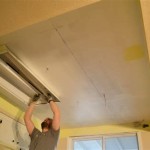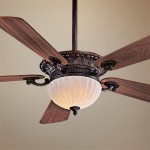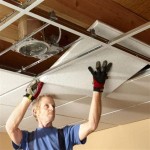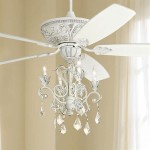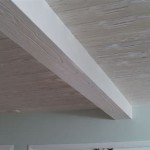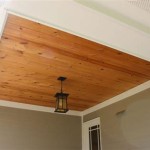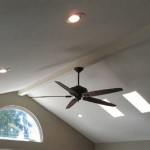```html
Suspended Ceiling Meaning In Urdu: A Comprehensive Guide
The phrase "Suspended Ceiling Meaning In Urdu" translates to the understanding of what a suspended ceiling is in the Urdu language. While a direct Urdu translation might vary depending on the context and specific materials used, the core concept refers to a secondary ceiling that hangs below the main structural ceiling of a room. This suspended ceiling, also known as a drop ceiling, false ceiling, or T-bar ceiling, is a common architectural element employed in both residential and commercial spaces for a multitude of reasons, ranging from aesthetics to functionality.
Understanding the nuances of suspended ceilings requires an exploration of their component parts, installation process, advantages, and disadvantages. This exploration will clarify the concept for Urdu speakers seeking information about this type of ceiling system. The primary goal is to provide a clear and concise explanation that transcends language barriers, focusing on the underlying principles of suspended ceiling technology and its applications.
The construction of a suspended ceiling typically involves a gridwork of metal channels, often referred to as T-bars, suspended from the structural ceiling using wires. These T-bars create a framework into which lightweight ceiling tiles or panels are inserted. The space between the structural ceiling and the suspended ceiling, known as the plenum, is then used to conceal mechanical, electrical, and plumbing (MEP) systems. This accessibility to the plenum space is a key advantage of suspended ceiling systems.
Accessibility and Maintenance
One of the most significant advantages of a suspended ceiling is the ease of access it provides to the services housed in the plenum. Unlike a fixed ceiling, where accessing wiring, ductwork, or plumbing requires cutting into the ceiling material, suspended ceiling tiles can be easily lifted or removed, allowing for quick and convenient maintenance, repairs, or upgrades. This accessibility significantly reduces downtime and labor costs associated with such tasks.
Consider a scenario where a faulty electrical wire needs repair within the ceiling cavity. With a traditional ceiling, a section would have to be cut out, the repair completed, and then the ceiling patched and repainted. This process is time-consuming, disruptive, and can create dust and debris. With a suspended ceiling, the relevant tile is simply lifted, the repair is made, and the tile is replaced, leaving no trace of the work.
Furthermore, the modular nature of suspended ceiling systems makes them highly adaptable to future changes. If the layout of a room needs to be altered and electrical outlets or lighting fixtures need to be relocated, this process is greatly simplified by the presence of a suspended ceiling. The ability to easily reconfigure the ceiling system contributes to its long-term cost-effectiveness.
Acoustic Performance and Aesthetics
Suspended ceilings play a crucial role in managing the acoustic properties of a room. The tiles used in suspended ceilings are often designed with sound-absorbing qualities, which can significantly reduce noise levels and reverberation within a space. This is particularly beneficial in environments such as offices, schools, and hospitals, where reducing noise pollution is essential for creating a more comfortable and productive atmosphere.
The acoustic performance of a suspended ceiling is determined by several factors, including the material, thickness, and density of the tiles. Different types of tiles are available with varying sound absorption coefficients, allowing designers to tailor the acoustic performance of the ceiling to the specific needs of the space. For example, fiberglass tiles are known for their excellent sound absorption properties and are often used in environments where noise control is critical.
Beyond acoustics, suspended ceilings also offer a wide range of aesthetic options. Ceiling tiles are available in a variety of colors, textures, and patterns, allowing architects and designers to create visually appealing and functional spaces. From simple, clean designs to more elaborate and decorative designs, suspended ceilings can be customized to complement the overall architectural style of the building.
Moreover, suspended ceilings can be used to conceal unsightly structural elements, such as exposed pipes, ductwork, and wiring. By creating a smooth, uniform surface, suspended ceilings enhance the overall appearance of the room and create a more polished and professional look. This is particularly important in commercial environments, where aesthetics can play a significant role in attracting customers and creating a positive brand image.
Installation Considerations and Cost-Effectiveness
The installation of a suspended ceiling requires careful planning and execution to ensure a level and aesthetically pleasing result. The process typically begins with the measurement of the room and the determination of the desired ceiling height. Hanging wires are then attached to the structural ceiling at regular intervals, providing support for the gridwork of T-bars.
The T-bars are carefully leveled and interconnected to create a stable framework. Once the grid is in place, the ceiling tiles are simply inserted into the openings between the T-bars. The installation process is relatively straightforward and can be completed by experienced contractors in a timely manner. However, proper planning and attention to detail are essential to ensure a professional and long-lasting installation.
In terms of cost-effectiveness, suspended ceilings offer a compelling value proposition. While the initial cost of materials and installation may be higher than that of a traditional ceiling, the long-term benefits, such as ease of maintenance, improved acoustics, and aesthetic flexibility, can result in significant cost savings over the lifespan of the building. Furthermore, the ability to easily reconfigure the ceiling system to accommodate future changes can further enhance its cost-effectiveness.
The cost of a suspended ceiling can vary depending on several factors, including the type of tiles used, the size of the room, and the complexity of the installation. However, in general, suspended ceilings are considered to be a cost-effective solution for both residential and commercial applications. The enhanced functionality and aesthetic appeal they provide make them a worthwhile investment for many property owners.
In conclusion, understanding "Suspended Ceiling Meaning In Urdu" ultimately involves grasping the broader concepts of drop ceilings and their numerous benefits. The ease of access to utilities, improved acoustics, aesthetic versatility, and cost-effectiveness make suspended ceilings a popular choice for a wide range of applications. By considering these factors, individuals can make informed decisions about whether a suspended ceiling is the right choice for their specific needs.
```
Ceiling Wikipedia

False Ceiling Rates In Stan Urdu Hindi

False Ceiling Design For Kitchen Bedroom Living Room With Fan 2024 Lighting Installation Ideas

Section 5 Installation

Ceiling Meaning In Urdu Study English To Words And Sentence Translation
Book False Ceiling Gypsum Services Starting At Inr In Hyderabad Global Technology

How To Install Drop Down Ceiling 10 Expert Tips For Perfection

Creative Ceiling Design Ideas For Stunning Interiors

Durable Grid For Ceiling In Industrial Spaces

Things You Need To Know About False Ceilings Graana Com
Related Posts

